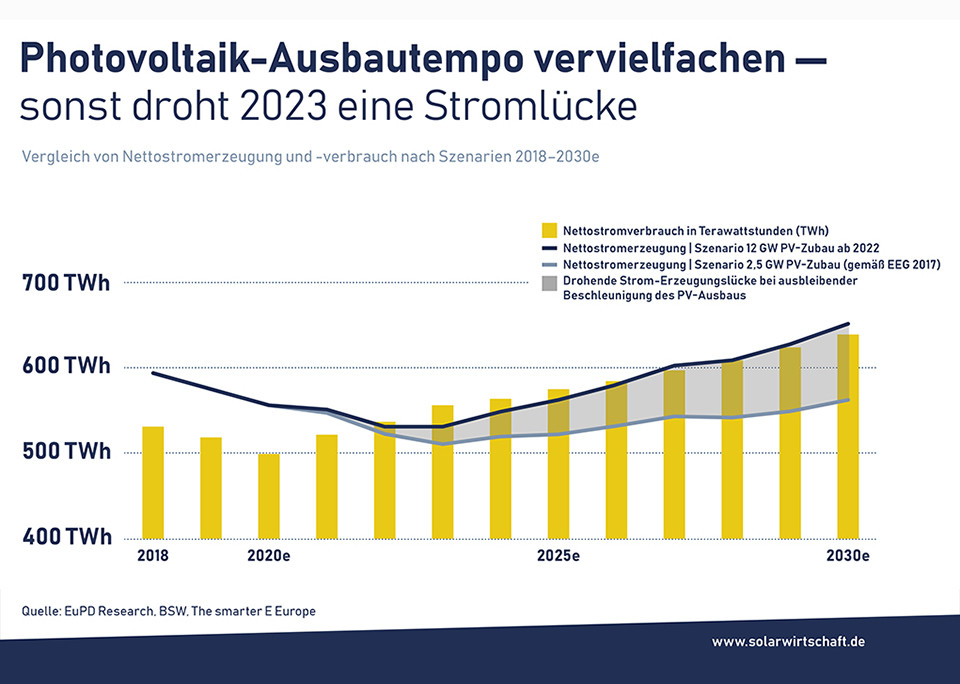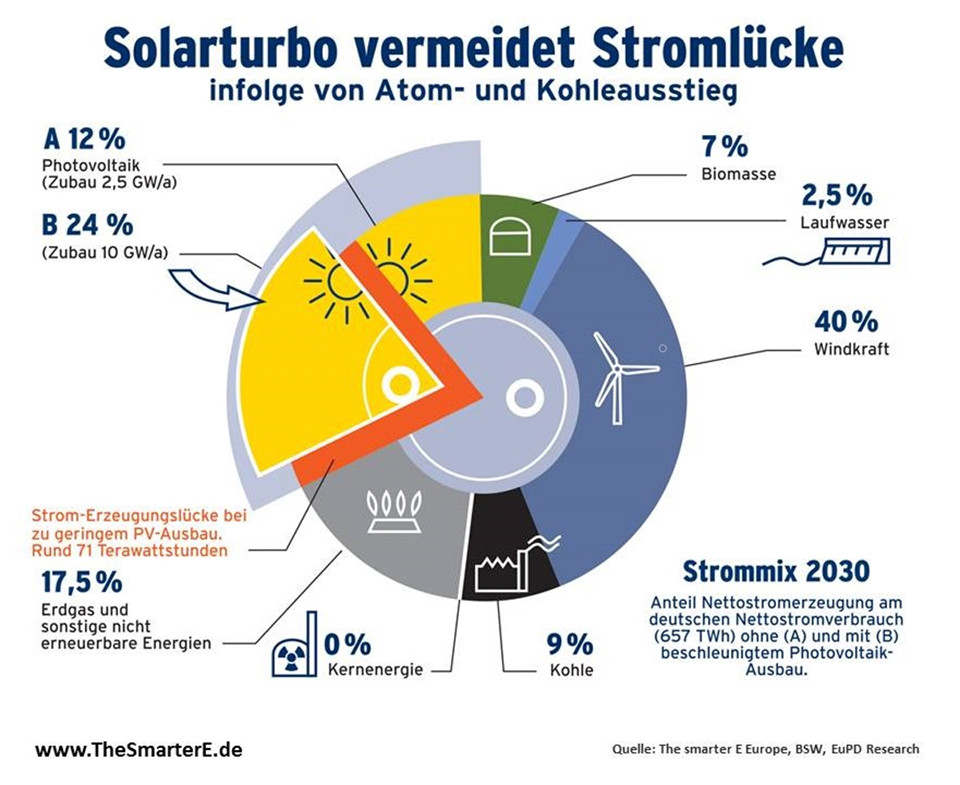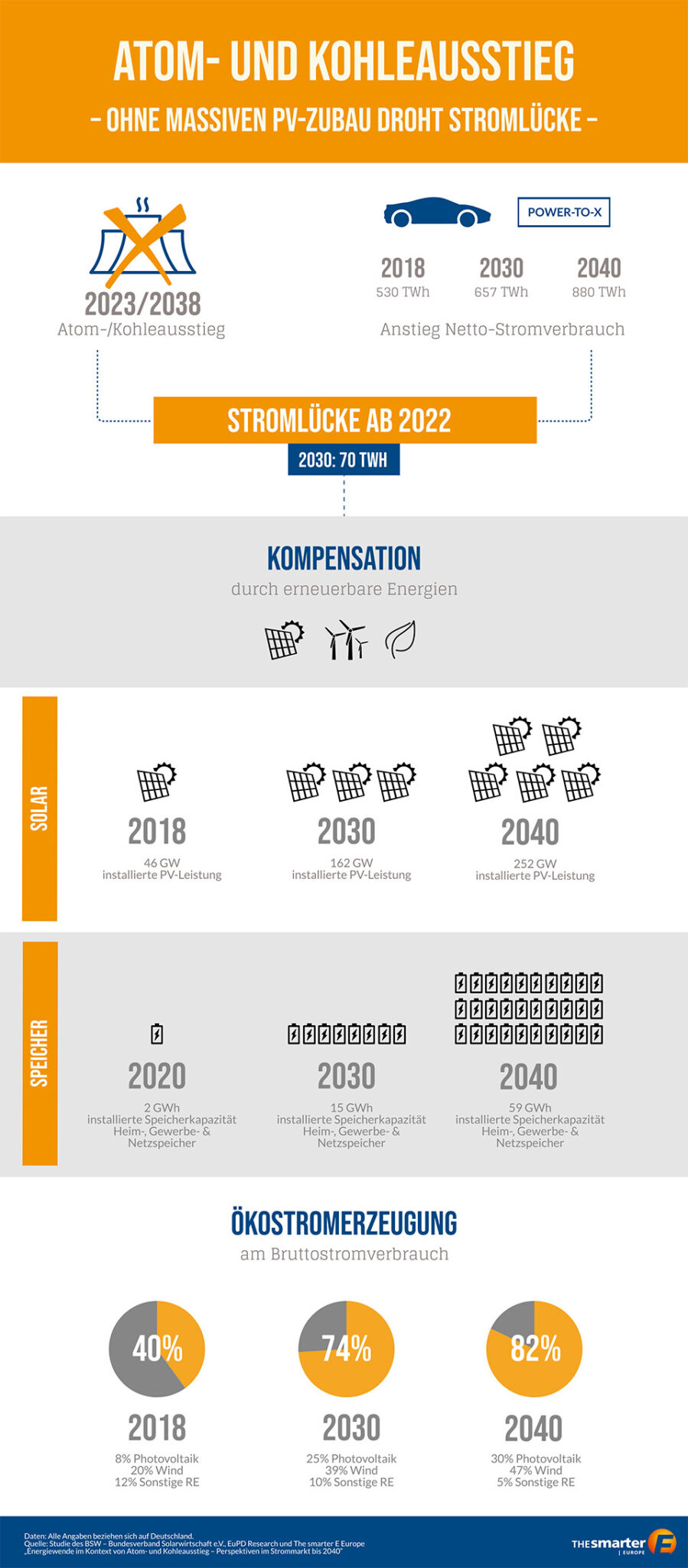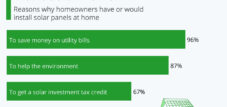Soon power shortage, despite corona crisis - Soon power shortage, despite corona crisis
Language selection 📢
Published on: August 18, 2020 / update from: October 12, 2021 - Author: Konrad Wolfenstein
The pace of photovoltaic expansion must be multiplied, otherwise there is a risk of a power gap in 2023. Against the background of the latest social, economic and political developments, the Bonn-based market and economic research company EUPD Research updated study carried out last autumn in cooperation with the German Solar Industry Association and the innovation platform The smarter E.
The pace of photovoltaic expansion must be multiplied, otherwise there is a risk of an electricity shortfall in 2023. Against the background of the latest social, economic and political developments, the Bonn-based market and economic research company EUPD Research has updated a study prepared last autumn in cooperation with the German Solar Industry Association and the innovation platform The smarter E.
Market researchers warn of an electricity generation gap due to slow expansion of renewable energy (renewable energies) with a simultaneous phase-out of nuclear power and coal - 46 terawatt hours are already missing in 2023 - tripling the pace of photovoltaic expansion can prevent a power gap - BSW: Adjust the government's expansion targets upwards and solar market barriers remove
Bonn researchers warn that a gap in the German electricity supply could arise as early as 2023. Only if the current pace of photovoltaic expansion is doubled from 2021 and tripled from 2022 can security of supply be guaranteed and the climate goals achieved.
As an impact of the economic crisis caused by the corona pandemic, market researchers at EuPD Research predict a decline in net electricity demand of four percent to just under 500 terawatt hours (TWh) in 2020. However, forecasts for economic recovery suggest that the economy's electricity consumption will rise as early as 2021.
As a result of the nuclear and coal phase-out and only a weak net expansion of onshore wind energy, market researchers predict that electricity generation will no longer be able to keep up with the increasing demand for electricity in three years at the latest. Despite the increased expansion of wind turbines in the North and Baltic Seas to 20 GW in the next ten years, there will already be an electricity generation gap of 46 TWh in 2023. This will grow to 77 TWh by 2030, which corresponds to 12 percent of the electricity demand expected at that point (see also graphic).
“To avoid an electricity generation gap, the annual photovoltaic expansion must be doubled from the current around 4 gigawatts in the year to 8 gigawatts in 2021 and even tripled to 12 gigawatts from 2022. However, if the legally stipulated expansion for photovoltaics remains at 2.5 GW per year, there will be a power gap as early as 2023,” comments Dr. Martin Ammon, Managing Director of EUPD Research , the study results. Carsten Körnig, managing director of the Federal Solar Industry Association, therefore appeals to the federal government: “It is time to increase the expansion targets in the Renewable Energy Act accordingly. At the same time, all market barriers for solar technology must finally be removed. Anyone who says A and is right to get out of nuclear and coal power and at the same time wants to see more electricity or green hydrogen in mobility, among other things, must now also say B and accelerate the expansion of renewable energies.
“We are in the middle of a comprehensive change in energy systems. This transformation process urgently needs reliable and clear political framework conditions - only then will new growth opportunities and sustainable business models arise for industry, trade and commerce," adds Markus Elsässer, Managing Director of Solar Promotion GmbH and initiator of the most important innovation platform for the new energy world, The smarter E Europe .
Against the background of the latest social, economic and political developments, the Bonn-based market and economic research company EUPD Research study “Energy transition in the context of the nuclear and coal phase-out – perspectives” last autumn in cooperation with the German Solar Industry Association and the innovation platform The smarter E Electricity market to 2040″ updated in June 2020.
The aim of the study was to create a realistic picture of the future of the German electricity market. In addition to modeling the German electricity market, the economic dimensions of the conversion and the effects on electricity prices are examined. Load profiles and generation profiles on a 15-minute basis act as a representation level. The model approach follows the so-called goal triangle of energy policy of environmental compatibility, economic efficiency and security of supply.
Market researchers warn of a power generation gap due to the slow expansion of renewable energies and the simultaneous phasing out of nuclear power and coal – 46 terawatt hours will already be missing by 2023 – Tripling the pace of photovoltaic expansion can prevent a power shortfall – BSW : adjust government expansion targets upwards and remove solar market barriers
Bonn researchers warned that a gap in the German power supply could already arise in 2023. Only if the current pace of photovoltaic expansion were to be doubled from 2021 and tripled from 2022 could security of supply be guaranteed and the climate targets achieved.
As an effect of the economic crisis caused by the corona pandemic, the market researchers of EuPD Research predict a decline in net electricity demand by four percent to just under 500 terawatt hours (TWh) in 2020. However, forecasts for economic recovery suggest that the economy will already start to consume more electricity in 2021.
As a result of the nuclear and coal phase-out and due to the weak net expansion of onshore wind energy, market researchers predict that electricity generation will no longer be able to keep up with the rising demand for electricity in three years at the latest. Despite the increased expansion of wind turbines in the North and Baltic Seas to 20 GW in the next ten years, there will already be a power generation gap of 46 TWh in 2023. By 2030, this gap will grow to 77 TWh, which corresponds to 12 percent of the electricity demand expected at that time (see also chart).
“To avoid a power generation Gap, The Annual Expansion of Photovoltaics Must Be Doubled from the Current 4 Gigawatts in 2021 to 8 Gigawatts and even Tripled to 12 Gigawatts from 2022. IF, On the other Hand, The Legally Stulated Expansion for Photovoltaics at 2.5 GW per Year, there will be Already Be to Electricity Gap in 2023, ”commented Dr. Martin Ammon, Managing Director of Eupd Research , On The Study Results. Carsten Körnig, Managing Director of the German Solar Industry Association, Therefore Appeals to the Federal Government: “It is time to Increase The Expansion Targets In The Renewable Energy Sources Act Accitingly. At the same time all Market Barriers for Solar Technology Must Finally Be Removed. Anyone Who Says A And Rightly Wants to Get Out of Nuclear and Coal Power and At The Same Time Want More Electricity Or Green Hydrogen in Mobility, Among Other Things, Must Now So Say B and Accelerate The Expansion of Renewable Energy ”.
“We are in the middle of a comprehensive transformation of Energy Systems. This transformation Process Urgently Needs Reliable and Clear Political Framework Conditions - Only then Will New Growth Opportunities and Sustainable Business Models Emerge for Industry, Trade and Commerce, Adds Markus Elsässer, Managing Director of Solar Promotion GmbH and Initiator of the Most Important Innovation Platform for the New Energy World the Smarter E Europe .
Against the Background of the Latest Social, Economic and Political Developments, The Bonn-Based Market and Economic Research Company Eupd Research Has Updated the Study Turnaround in the Context of the Nuclear and Coal Phase-Out-Prospects in the Electricity Market Up to 2040 ”, What was Prepared last autumn in cooperation with the German Solar Industry Association and the Innovation Platform the Smarter E , in June 2020.
The aim of the study was to draw up a realistic picture of the future of the German electricity market. In addition to modeling the German electricity market, the economic dimensions of the transformation and its effects on the electricity price are examined. Load curves and generation profiles on a 15-minute basis are used as the presentation level. The modeling approach follows the so-called target triangle of energy consisting of policy of environmental compatibility, economic efficiency and supply security.





























